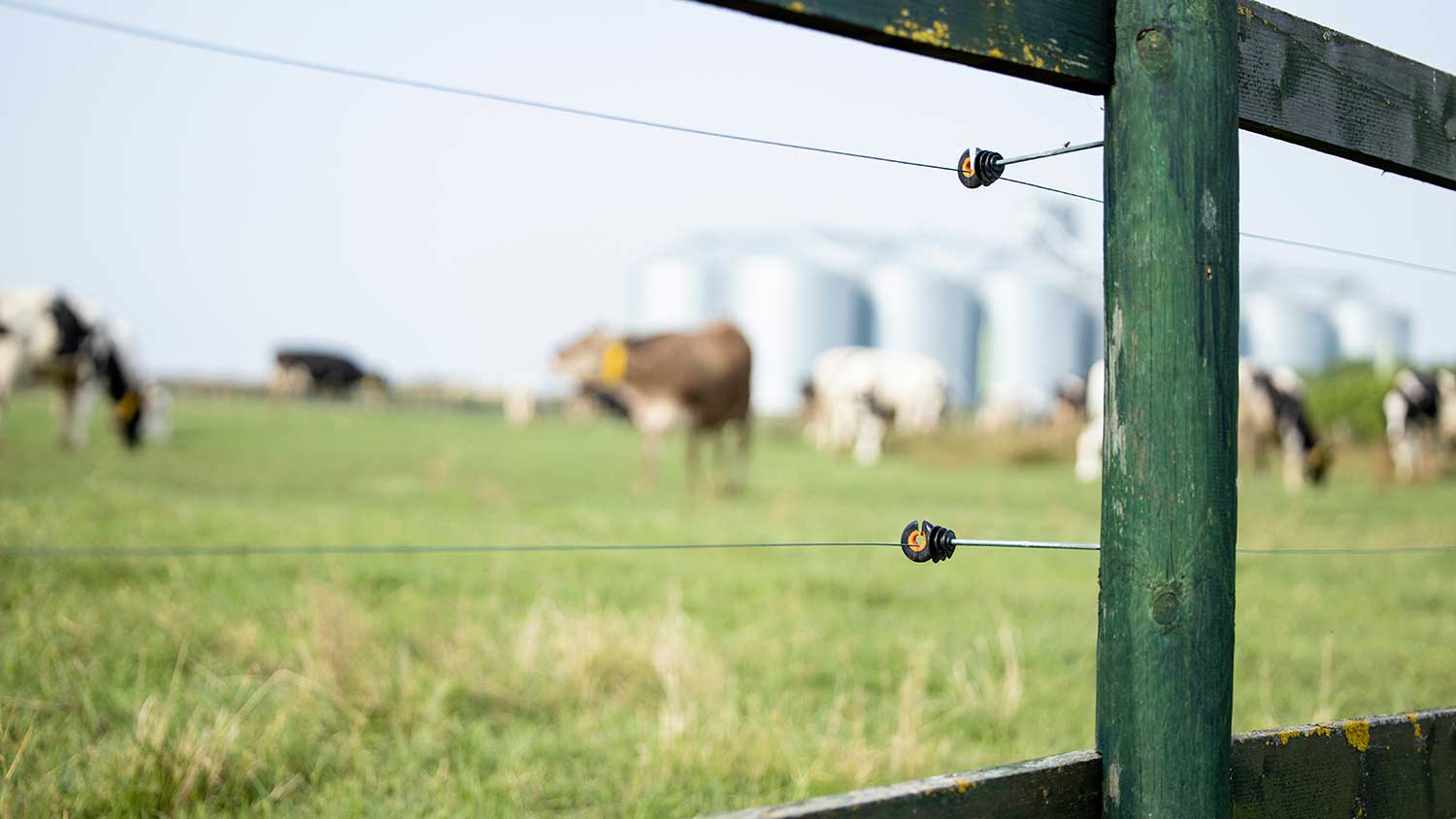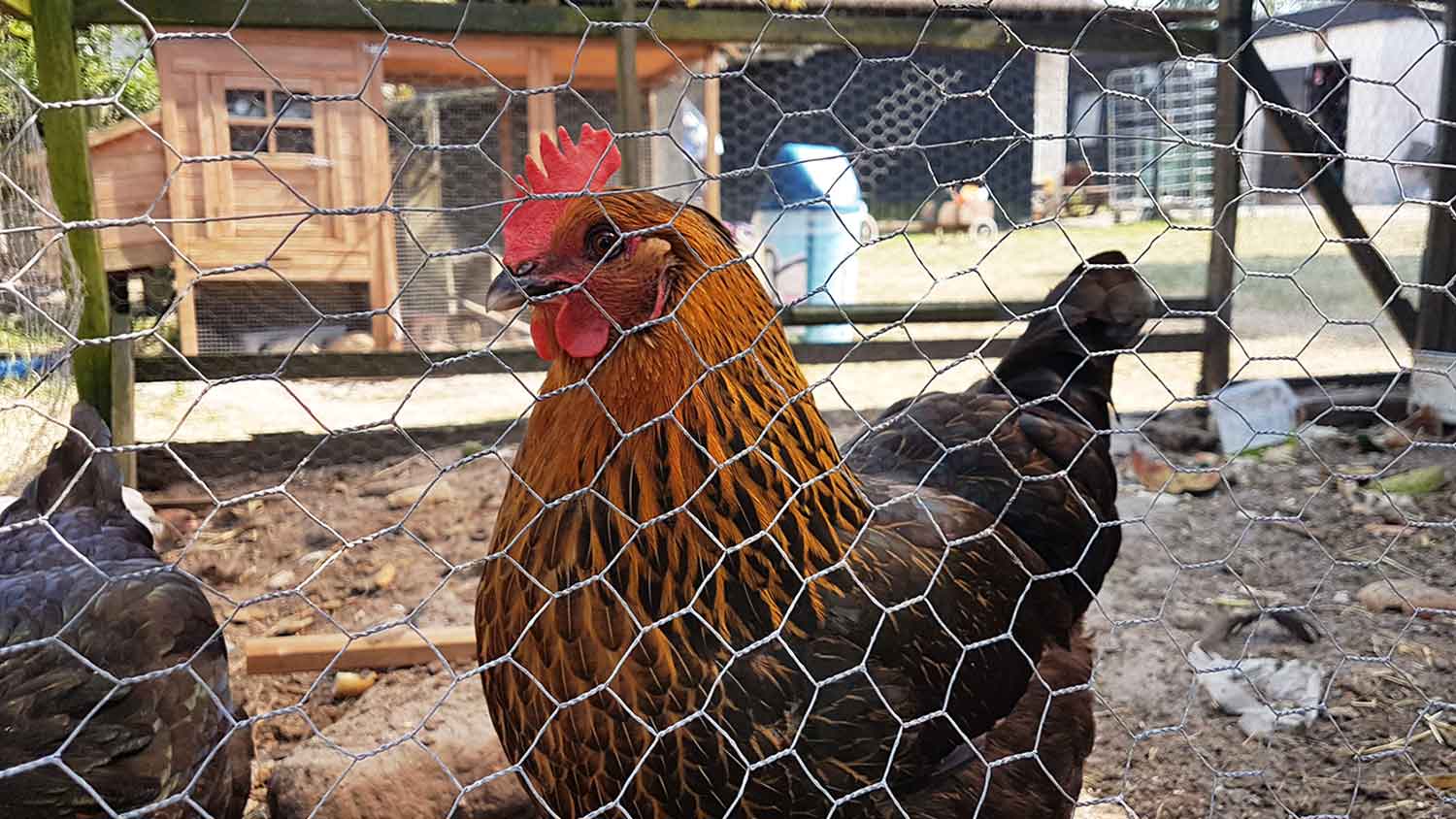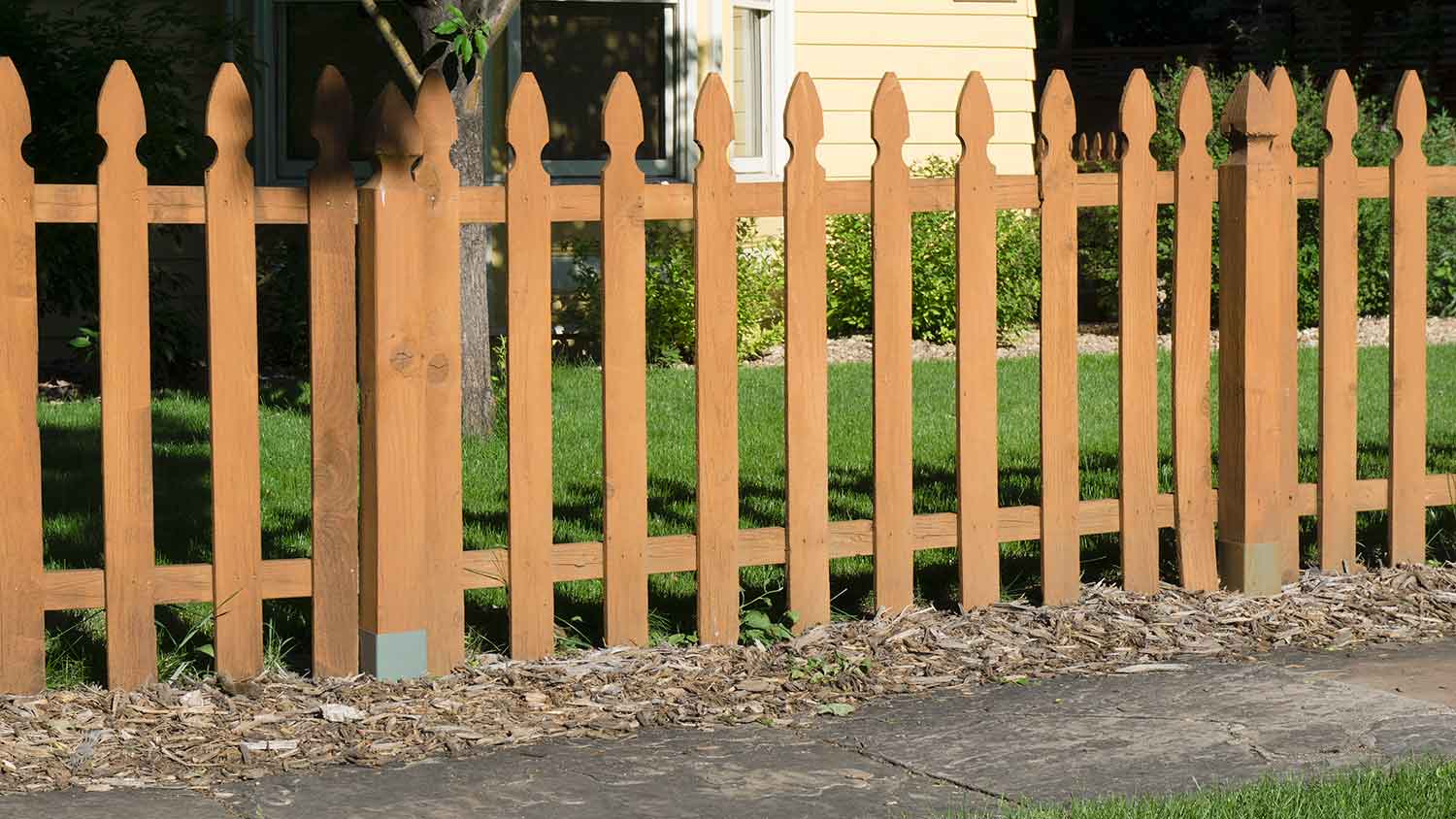10 Types of Wire Fences for Yards and Farms
From barbed to chicken, wire fences are impressively versatile


While many people may dream of having a white picket fence around their home, wire fences are an often overlooked option that can offer many more benefits for securing your property. From wire netting used to contain the chickens on your homestead to durable and attractive welded wire fences for home security, wire fence material comes in many different forms to suit almost any need you may have for your home.
Here are 10 common types of wire fences to consider for your next fencing project.
1. Barbed Wire

If you’ve ever driven through the countryside, you’ve likely come across barbed wire. Barbed wire fences feature horizontal lines of twisted wires that are made from steel and strung between wooden posts. Manufacturers position pointed barbs evenly along each line. Barbed wire fencing is common on massive properties containing livestock, particularly cattle, to keep out predators.
You may want to install barbed wire to form cattle or pig enclosures. You can also use this type of wire fence to keep pests out of a garden, although it may not be your best choice if you have small children or pets who could be injured by the barbs.
You’ll spend about $0.03 to $0.08 per linear foot on the price of a barbed wire fence, or about $60 to $110 per roll (each roll is 1,320 feet long).
| Barbed Wire Pros | Barbed Wire Cons |
|---|---|
| Cost-effective | Not safe for small children |
| Good at keeping out pests | Pets can be injured |
Best for: Keeping out predators who may harm your livestock.
2. Welded Wire

Welded wire fencing features wires that run vertically and horizontally. Welders fuse the places where the wires intersect. The result is a sleek but strong fence that works well for most residential and commercial uses and adds a streamlined industrial vibe to any yard or lot. Because they weld the wires together, manufacturers can use industrial-grade materials for a highly durable fence. You may see welded wire fences around gardens, pools, nature reserves, parks, and dog kennels.
If you’re considering adding a welded wire fence to your property, you can expect to spend about $4 to $10 per linear foot for materials and labor.
| Welded Wire Pros | Welded Wire Cons |
|---|---|
| Sleek design | Expensive |
| Strong and durable | Very rigid |
Best for: Homeowners who are ready to commit to a long-term fencing solution.
3. Woven Wire

Woven wire fences are similar to welded wire fences in that manufacturers create them by intersecting vertical and horizontal wires. But instead of welding them together, the manufacturer wraps the wires around each other. If you’re familiar with chain link fences, then you already know one of the most popular versions of a woven wire fence.
Woven wire fences work well for containing pets or livestock. You’ll find woven wire in different gauges (thicknesses) based on your fence’s purpose. The lower the gauge number is, the thicker the wire is. Smaller gauging (higher numbers) is best for gardens and small animals, while heavy-duty gauging (smaller numbers) can contain larger animals, like cattle or horses.
Chain link fences cost about $10 to $20 per linear foot on average, while other woven wire fences cost between $0.10 and $0.14 per braid, with each fence requiring multiple braids.
| Woven Wire Pros | Woven Wire Cons |
|---|---|
| Customizable | Expensive |
| Effectively contains livestock | Not eye-pleasing |
Best for: Homeowners who want a customizable solution that meets their unique needs.
4. Electric Wire

Electric wire fences range from 2,000 to 10,000 volts, which will shock but not injure people and animals. This type of fencing is common on farms to contain livestock and keep out predators. It’s worth noting that electrified fences in high-security areas, like military sites, prisons, or commercial lots, may have higher voltages that can cause a more powerful shock.
An electric fence costs about $2.40 to $3.90 per linear foot to install. While DIYers can install many fences on their own, it’s best to hire a fence company near you to install electric wire fencing. Incorrect installation could lead to injuries, even lethal ones, to humans or animals. Even after a pro installs the fencing, avoid touching the wire or letting others do so.
| Electric Wire Pros | Electric Wire Cons |
|---|---|
| Effective at keeping out predators | Very expensive |
| Strong security protection | Difficult to install |
| Deters trespassers | Dangerous to kids and pets |
Best for: Homeowners who are concerned about predators or break-ins.
5. Straining Line Wire

Straining line wire fences look similar to barbed wire fences, with horizontal wires strung between fence posts, but without the sharp barbed points. On its own, straining line wire fencing doesn’t offer much in terms of security. Instead, it’s meant to run tightly along the tops of fence posts to create more stability and durability for a fence made of other materials. It’s useful, for instance, if an animal gets a little too excited on their morning jog and bumps into the fence.
Straining line wire farm fencing costs about $2 to $20 per linear foot, or you may pay per number of wires you need for the fence.
| Straining Line Wire Pros | Straining Line Wire Cons |
|---|---|
| Adds stability to a fence | Price can vary significantly |
| Enhances fence durability | Lacks security benefits |
Best for: Homeowners who aren’t concerned with security but who want to strengthen their fence.
6. Chicken Wire

Also known as wire netting or poultry netting, chicken wire is a popular type of wire fence that’s perfect for containing chickens or other small animals or protecting gardens from pests, especially rodents. To create chicken wire, which is often made of galvanized steel, manufacturers twist and seal the wires together to form hexagonal shapes.
While chicken wire can help prevent small animals from feeding on your lush garden and keep your chickens in a confined area in the backyard, it isn’t strong enough to keep out larger predators, like coyotes or foxes. You’ll need to install a stronger wire fence, like a woven or welded fence, if your area is prone to more sizable animals that threaten your chickens or crops.
Chicken wire installation costs $2 to $4.50 per linear foot, making it a budget-friendly choice for enclosing small animals.
| Chicken Wire Pros | Chicken Wire Cons |
|---|---|
| Easy to install | Large price variance |
| Offers visibility | Doesn’t keep out predators |
Best for: Homeowners looking to contain small animals, like chickens.
7. Aluminum Wire

If you want to build a wire fence, aluminum is a popular choice for its lightweight properties. It’s also a common option for building thin, electrified wire fences because the material is a good conductor.
Aluminum stands up well to rain and moisture, so you don’t have to be as concerned about rust and corrosion over time as you do with other types of wire fences. The drawback of aluminum is that it isn’t quite as durable as other metal materials, like steel. It’s less costly than steel, but is still on the higher end of the price range for wire fences, coming in at $7 to $40 per linear foot.
| Aluminum Wire Pros | Aluminum Wire Cons |
|---|---|
| Moisture resistant | Can be expensive |
| Lightweight | Less durable than other materials |
Best for: Homeowners in moisture-prone areas looking for a lightweight solution.
8. Steel Wire

In addition to aluminum, manufacturers often use thin steel for electric wire fences because of its electricity-conducting properties. Steel wire fences are more durable than aluminum, and stainless steel resists corrosion and harsh breezes in coastal areas. Steel fence installation costs a bit more upfront than other wire materials, around $37 to $60 per foot for materials and labor, but its durability and longevity make it an attractive choice for homeowners embarking on a new fencing project.
| Steel Wire Pros | Steel Wire Cons |
|---|---|
| Strong electricity-conducting properties | Expensive materials |
| Durable | Labor can be expensive |
Best for: Homeowners willing to invest in a durable, long-term solution.
9. Vinyl-Coated Wire

Vinyl-coated (VC) wire fences have a thick vinyl coating over the wires, which are welded or woven. The coating, often in green or black, is meant to provide a softer surface in case humans or animals come into contact with the fence. That’s why you’re likely to see vinyl-coated wire fences around playgrounds or swimming pools—they’re a safer option for the kiddos if they happen to touch them.
VC wire fences cost about $12 to $39 per linear foot for materials and labor, putting them in the middle of the pack as far as wallet friendliness goes.
| Vinyl Coated Wire Pros | Vinyl Coated Wire Cons |
|---|---|
| Safe for humans and animals | Lacks privacy |
| Budget-conscious | Not very secure |
Best for: Homeowners concerned about the safety of their children or pets.
10. Hog Wire Fence

Hog wire fences stand out for their rugged durability and practical design. Unlike regular wire fences, it's built with robust welded grids, ensuring both security and visibility. This open-concept fencing is perfect for containing animals (unless they are on the smaller side and at risk of escape through the fence gaps) while preserving scenic views. However, some may see this as lacking privacy. Hog wire installation costs depend on factors like fence height, material quality, and labor, averaging between $8 to $15 per linear foot. Choose hog wire for a straightforward, cost-effective solution that delivers both functionality and a no-nonsense aesthetic.
| Hog Wire Pros | Hog Wire Cons |
|---|---|
| Cost-effective | Lacks privacy |
| Durable | Smaller animals can pass through gaps |
Best for: Homeowners without small pets or animals that can escape through fence gaps.
Can You Install a Wire Fence Yourself?
Homeowners can install a wire fence themselves, but how difficult this task will be depends on factors like the type of wire fence and the terrain. Installing a basic wire fence, such as chain-link or welded wire, is a moderately challenging DIY project that many homeowners can undertake with the right tools and instructions. These fences involve setting posts, stretching the wire, and securing it properly.
Homeowners with basic DIY skills and tools like post hole diggers, levelers, and tensioning devices may find wire fence installation manageable. However, it’s essential to do your research and consider factors like property lines, local regulations, and soil conditions before starting this project.
While some homeowners may find wire fence installation manageable, those lacking time, tools, or prior experience may opt to hire a professional fence installer to ensure a secure and professionally finished result. Knowing how to hire a fence contractor can save homeowners a lot of time and stress, which some may find well worth the cost.
Paige Bennett contributed to this piece.




- The Types of Farm Fencing and How to Choose the Best One
- 11 Types of Fences for Added Privacy in Your Yard
- How to Strip Wire: A DIY Guide
- What Is the C-Wire on a Thermostat? Everything You Should Know Before Installation or Repairs
- 8 Types of Metal Fences for Yards, Pools, and More
- 30 Front Yard Fence Ideas to Welcome You Home
- Understanding Your Electric Fence Wiring Diagram
- What Does the Neutral Wire Do?
- 9 Types of Wood Fences to Consider for Your Yard
- 25 Wood Fence Ideas and Simple Designs to Make Any Space Shine










